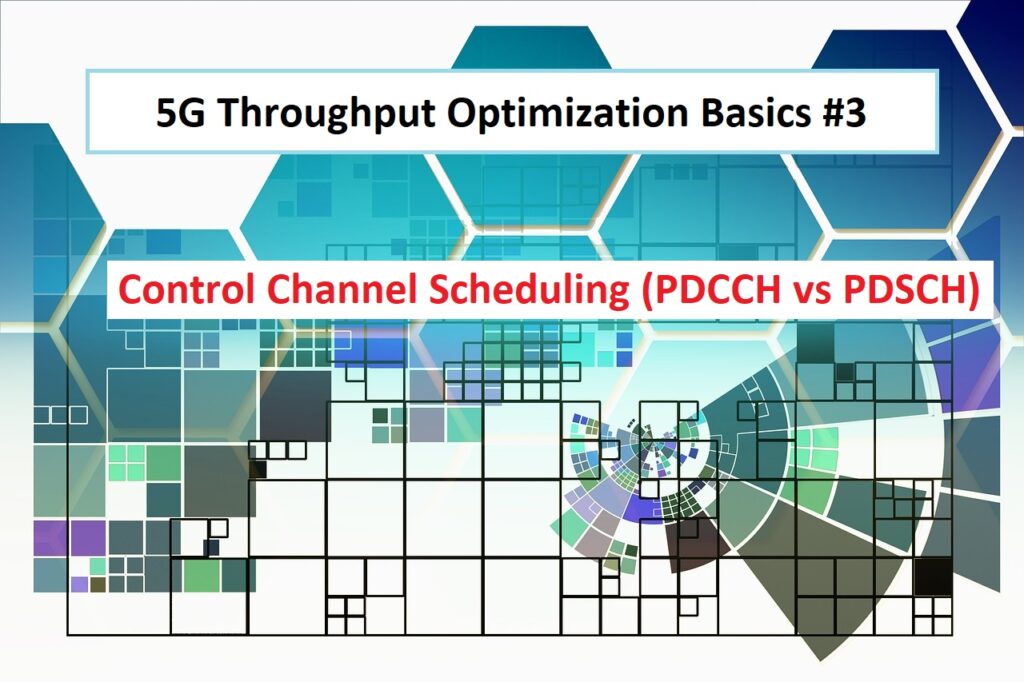This is the 3rd article for 5G Throughput Optimization where I have explained scheduling from the perspective of the Control Channel and how it differs from the Data Channel. It also explains why Control Channel Scheduling is different and the impact of Control vs Data failures. The Control Channel is referring to the PDCCH and the PDCCH is essentially made up of CCEs (Control Channel Elements). However, the allocation of PDCCH is done in group of CCEs and these groups are called PDCCH Aggregation Levels.
Typically, in 5G, there are 5 PDCCH Aggregation Levels as given below!
- PDCCH Aggregation Level-1 contains 1 CCE
- PDCCH Aggregation Level-2 contains 2 CCEs
- PDCCH Aggregation Level-4 contains 4 CCEs
- PDCCH Aggregation Level-8 contains 8 CCEs
- PDCCH Aggregation Level-16 contains 16 CCEs
Once the eNB/gNB get the CQI, it is converted to a certain PDCCH Aggregation Level. Low PDCCH Aggregation has lesser overhead (low CCE count) and it is used for UEs in good channel conditions while Higher PDCCH Aggregation has higher overhead (high CCE count) and it is used for UEs in bad radio conditions Basically, higher the PDCCH Aggregation Level, higher the robustness and decoding capability of the PDCCH but higher the overhead too!
For the Control (PDCCH) Scheduling, the algorithm is also based on CSI reports
- The algorithm is based on CSI reports where the UE receives CSI-RS/CSI-IM and estimate CSI feedback (CQI,RI,PMI) and then sends this CSI feedback to the gNB. The gNB uses this CSI feedback to estimate the UE’s channel conditions and assigns a particular PDCCH Aggregation Layer accordingly.
- The second part of the algorithm serves as an outer loop where the gNB keeps checking the BLER statistics for each UE’s PDCCH and then modifies the aggregation layer based on PDCCH BLER. This part of the algorithm is not present in all implementations yet.
To understand the main difference between PDCCH and PDSCH BLER, we need to understand the concept of UE decoding. The UE needs to read the PDCCH first to find the location of the PDSCH. If the UE finds the PDSCH, then based on the decoding result of the PDSCH, it sends feedback to the eNB/gNB (ACK/NACK).
But if the UE sends ACK/NACK, then that means by itself that PDCCH was decoded successfully, only then, the UE can get the location of the PDSCH. Thus, PDCCH scheduling should not depend on ACK/NACK feedback. If the UE fails to decode PDCCH then it should not send anything in response (no feedback). This is also called DTX state.
In case you have any queries or want to connect with Ali Khalid, please feel free to drop a comment under t or follow him on LinkedIn
Also, If you liked this article, then please subscribe to our Youtube channel – Our Technology Planet for more exciting stuff and videos.
Ali Khalid
Latest posts by Ali Khalid (see all)
- 5G Coverage Expansion Analysis – Find The Optimal 5G Coverage Threshold For Your Network - November 9, 2024
- 5G Coverage Expansion - November 9, 2024
- 5G SA Cell Search & Network Entry Matrix - July 18, 2023

HI Ali Khaled,
Your explanation is amazing, salute you!